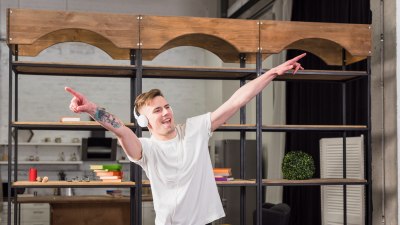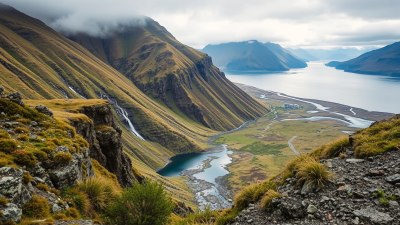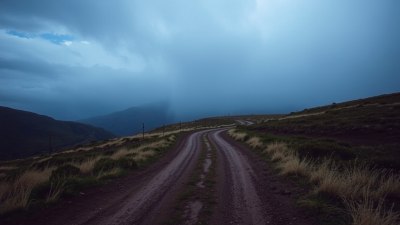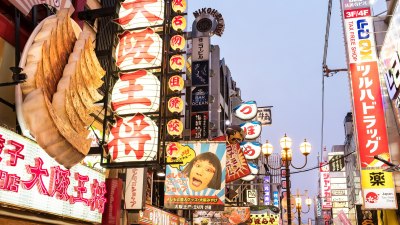Learning to Be Present Through Movement
Discover the power of movement to cultivate mindfulness and presence in your daily life.

In a world that constantly demands our attention, finding moments of presence can be a challenge. Yet, learning to be present through movement offers a unique pathway to mindfulness and self-awareness. Movement, whether through dance, yoga, or simple exercise, serves as a powerful medium through which we can reconnect with our bodies and the present moment.
Being present is not just about being physically in a place; it is a state of consciousness where you are fully engaged in the here and now. When we move our bodies, we draw ourselves away from the distractions of thoughts and worries, allowing the experience to ground us. Movement invites us to be aware of our physical sensations, the rhythm of our breathing, and the energy that flows through our bodies.
The Mind-Body Connection
The mind-body connection is an essential concept in understanding how movement can enhance our mindfulness. Our thoughts and feelings are intertwined with our physical state; when we experience stress or anxiety, it can manifest in tense muscles or restricted movements. Conversely, engaging in physical activity can release these tensions, leading to a calmer and more focused mind.
By becoming aware of how our bodies respond to different emotions and thoughts, we cultivate a deeper understanding of ourselves. For instance, the practice of yoga encourages us to notice how our bodies feel in various postures and to breathe through discomfort. This awareness can extend beyond our practice into everyday life, helping us to react more thoughtfully rather than impulsively.
Finding Your Movement Practice
Finding the right movement practice for you is pivotal in learning to be present. There are myriad forms of movement, each offering distinct benefits. Some people thrive in structured environments like yoga or Pilates, while others find joy in spontaneous dance or team sports.
Experimenting with different types of movement can help you discover what resonates with you. For instance, if you have a competitive spirit, join a local sports team or engage in a high-energy workout class. On the other hand, if you prefer tranquility, consider joining a yoga class or exploring tai chi. The key is to listen to your body and choose activities that feel good while allowing you to focus on the present moment.
To incorporate mindfulness into your movement, begin by setting an intention each time you engage in physical activity. This intention could be as simple as “I wish to feel my body completely” or “I want to let go of tension.” Setting an intention helps you anchor your practice, guiding you back to presence when distractions arise. Additionally, pay attention to your breath. Thoughtfully coordinating your breath with your movements can heighten your sense of awareness. For instance, in yoga, if you synchronize a deep inhale with upward movements and a slow exhale with downward transitions, it can create a rhythm that enhances mindfulness.
Practice being aware of your body's sensations as you move. Focus on how your muscles contract and release, how your joints mobilize, and how your heart rate changes. Notice the ground beneath your feet, the temperature of the air, and the sounds around you. This acute awareness transforms movement into a meditative practice, allowing you to be fully engaged with each aspect of your experience.
Movement as a Form of Meditation
Movement can serve as a profound form of meditation, providing a different but equally valid way to connect with ourselves—a way that doesn't require sitting in stillness to attain mindfulness. When we engage in movement meditation, we allow our bodies to express themselves freely, without judgment, nurturing creativity and spontaneity.
To practice movement meditation, begin by finding a quiet space where you can move without distractions. Start with simple movements, allowing your body to flow as it desires. You might sway, stretch, or even dance. Pay attention to how this spontaneous movement feels in your body and mind. If thoughts arise, acknowledge them, but gently bring your focus back to the sensations of movement.
The Benefits of Being Present Through Movement
Engaging in movement with presence not only enhances our mental well-being but also improves our physical health. Research suggests that mindful movement can lower stress levels, reduce symptoms of anxiety and depression, and improve overall life satisfaction. When we cultivate mindfulness through movement, we are more likely to nourish our bodies with healthy choices, practice self-care, and cultivate a positive body image.
Furthermore, being present through movement fosters a sense of community and connection. Group fitness classes, dance sessions, or team sports allow us to bond with others, share experiences, and create lasting memories. Engaging in collective movement instills a sense of belonging, reminding us that we are never alone in our journey towards mindfulness.
Mindful Walking: A Simple Practice
If you are looking for a straightforward way to incorporate movement and mindfulness into your life, mindful walking is an accessible practice. Find a quiet place where you can walk undisturbed, such as a park or a garden. Begin by standing still for a moment, taking deep breaths to center yourself. When you start to walk, pay attention to the sensations in your feet as they connect with the ground.
Notice the shift in weight from one foot to the other, the feeling of the air against your skin, and the sounds around you. Allow your mind to wander if it desires, but gently return your focus to the act of walking when you notice distractions. This practice nurtures a sense of calm and clarity, encouraging you to stay present in each step.
Creating a Routine
To reap the full benefits of being present through movement, consider creating a routine that incorporates regular physical activity. This could include dedicated movement sessions several times a week, combined with shorter practices such as stretching or mindful walking throughout your day. A consistent routine fosters discipline, making it easier to cultivate mindfulness in your life.
Remember, your movement routine doesn't have to look like anyone else's. Focus on what feels good for you, listen to your body, and allow creativity to guide your practice. Be patient with yourself, as developing a mindful relationship with movement takes time and practice.
Overcoming Challenges
As with any endeavor, challenges may arise as you learn to be present through movement. You may encounter physical limitations, distractions, or a busy schedule that complicates your ability to find time for movement. It’s essential to approach these challenges with compassion and understanding. Life is inherently demanding, and it’s okay if some days are more difficult than others.
If physical limitations prevent you from engaging in certain movements, seek alternatives that accommodate your needs. Adaptations can help you remain active, whether through seated exercises or gentle stretching. Furthermore, don’t hesitate to modify your movement practice according to your energy levels or circumstances—it’s not about perfection but rather about fostering a connection to your body.
Learning to be present through movement is a lifelong journey that invites us to deepen our connection to ourselves. Embrace the process, and remain curious about how different movement practices can enrich your life. As you cultivate mindfulness through movement, you may find that being present extends beyond the physical activity itself, enriching your daily experiences and transforming the way you navigate the world.











